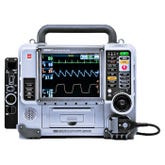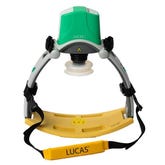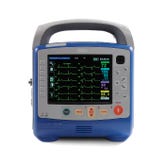How to Create and Implement a Public Access Defibrillator Program
- Feb 25, 2019

Automated External Defibrillators (AEDs) save lives when someone collapses due to Sudden Cardiac Arrest (SCA) as long as an AED is at the side of the victim and ready to deliver a life-saving shock within 5-6 minutes of collapse.
You may have seen AEDs in wall cabinets in various public gathering places (sports or concert arenas, doctor/dentist offices, casinos, etc). You may know someone that was saved by an AED and will never forget the gratitude that you have for the responders and for the availability of the life-saving AED. Or, you may know of someone who lost a loved one to sudden cardiac arrest and are aware of the fact that having an AED within 6 minutes of SCA collapse may have saved that life. If you are a parent or school administrator you know what value an AED Program will bring to your school system, with student athlete sudden cardiac arrest in the news more frequently. Currently, several industries are required and mandated by law to provide AEDs while others are joining voluntarily.
Although the deployment of defibrillators is becoming more widespread, they are not as prevalent and accessible within the 6 minute window to save a life as one might think. For example, these estimates suggest a glaring lack of AED availability through local EMS, Fire and Police departments: Only 50% of ambulances have an AED; 10-15% of first response fire department vehicles and less than 1% of police vehicles carry defibrillators. These statistics, while estimates, are a call to action to take steps to have an AED Program in place within your company or school system in the event that EMS is not equipped or cannot reach a victim within 6 minutes.
There are already successful programs at work and the following is a good framework to use to start the process of developing and implementing your program.
1. The first step is to bring a small team of motivated people together who understand the value of an AED program.
2. Develop a Statement of Need that includes your goals. Collect materials and documentation that demonstrate the importance of having an AED and an AED Program.
3. Know your state’s AED Legislation.
4. Understand Good Samaritan Laws for not only your state, but federal Good Samaritan immunity as well.
5. Create an Implementation Plan based on your community or organizations need.
- 6. Assess your Community or organizations readiness.
Does your area have enhanced 9-1-1 coverage?
Are 9-1-1 dispatchers trained to give CPR instructions over the phone?
What is the survival rate for SCA in your community?
What is the EMS “collapse to shock” time?
Are all responders trained to deliver the first shock within 60 seconds of their arrival?
How many first responders have AEDs?
Are your community’s first responder vehicles (ambulances, police cars, fire department vehicles) equipped with AEDs?
What is the level of training of the local EMS provider and other emergency response personnel?
Are there defined high traffic areas where people gather?
About how many local adults and students have had CPR training?
7. Determine the right AED for your community or organization. Make sure the AED is pediatric capable.
8. Location of AEDs is a key for success in the program. Make sure the AED(s) are accessible at all times, located close to where physical education classes are, sporting events, large gathering areas, and people at high risk, etc. The AED should never be locked up in an office and inaccessible. The AED should be available during sporting events that are on outside fields.
9. Determine your community’s high risk locations.
- 10. Build a team of champions to include:
Emergency medical services personnel
City government representative
Healthcare practitioner
Business leader
Civic Group leader
Local college and school system representatives
Senior citizen organization representatives
Members of CPR training groups – American Heart Association, American Red Cross
Members of local media
Concerned citizens
SCA survivors and their family and friends
11. A Medical Direction Program is essential and this is not negotiable. There are several companies that are experts in taking care of what is called Medical Direction or Medical Oversight for Public Access Defibrillator programs and they are affordable and well worth the money. You will have peace of mind knowing that your AEDs are always rescue-ready and compliant.
- These are other necessary parts to the program that a good medical oversight company provides:
A physician’s prescription for the device
Register AEDs with local EMS
Ensure the appropriate and important maintenance of the AEDs in the program including management of battery and pad expiration dates
Oversee certification and recertification of training programs
Review the data after a sudden cardiac arrest event
12. Create a Comprehensive Training Program for CPR and AED use. Sudden Cardiac Arrest requires both CPR and an AED to shock the heart back into rhythm and this training should go along with basic CPR. Most AEDs provide audible and visual prompts to walk even a young child through the use. Sufficient training should take about 3-4 hours and a large number of people can be trained at one time. AEDs are visible and accessible and more and more lay people are using them as the real first responders in many cases. The more people trained in basic CPR and AED use the better. Contact The American Red Cross or the American Heart Association for more information on training. CPR is the life-saving link that keeps a victim’s organs functioning until defibrillation begins. Training our middle school and high school students in CPR can bring over a million trained responders into the population every few years.
13. Identify the members of your emergency team and have a written emergency plan. This team should include a medical professional (i.e. school nurse), coaches, staff, facilities manager, etc.
14. Know your legal liability. Consult your local EMS agency to ensure that you are aware of all aspects of the law in your state. It is better to have too much information than too little. Do not let the fear of legal liability prevent you from moving ahead with your defibrillation program, but rather arm yourself with knowledge and facts about AEDs and a Public Access Defibrillator program.
- Here are some suggestions:
Consult with your state’s EMS agency to be aware of laws and regulations
Make sure your training program meets your state’s specifications
Learn who should be trained
Understand correct AED placement for easy and quick access
Designate key people to be in charge of ensuring maintenance is up to date according to manufacturer’s instructions
Consider buying liability insurance
Understand Good Samaritan Laws that provide immunity to people who voluntarily use a defibrillator to try to save a life.
15. Finding funds for your program: Determine how much money your program will need based on number of AEDs and Medical Oversight. Take into account that there are accessories on an AED that have expiration dates (batteries and pads) that must be replaced, and that should be factored into the annual budget. Many communities are more than willing to provide financial support in the form of tax deductible donations.
- Additional potential sources of funding are:
Municipal or state budgets
Government grants
Local businesses
Civic organizations
Private foundations and public charities
Fund-raising events
16. Once your program is in place, make sure you integrate with local EMS personnel and safety officials. Notify the local EMS office when new AEDs are purchased and let them know the specific location of each additional AED.
17. Create public awareness and support for your program. By informing and educating as many people as possible, you gain support and awareness. Consider using public relations materials to further the education chain. Meeting with local civic organization is another step to getting the important facts about sudden cardiac arrest and the importance and value of having an AED program for the community.
18. Rest easy in the successful establishment of a Public Access Defibrillator Program, and continually ensure that this program is maintained through a medical oversight plan.








 CALL US:
CALL US: